 Written by Mike Price, OT
Written by Mike Price, OT
No one expects an injury to happen, but they do. Often, injuries occur in the lower extremity and cause the inability to put pressure or bear weight on that extremity. As a result, a mobility device is required to help you ambulate throughout the day. Many people will be faced with this situation at some point in their lifetime. In 2021, the assisted walking device market was reported to be valued at 3.4 billion dollars. Assisted walking devices include crutches, canes, and scooters. Unfortunately, many of these devices are not very practical to use or very comfortable. The iWALK 3.0 offers a more comfortable option that allows you to go about doing your activities throughout the day with little to no limitations.
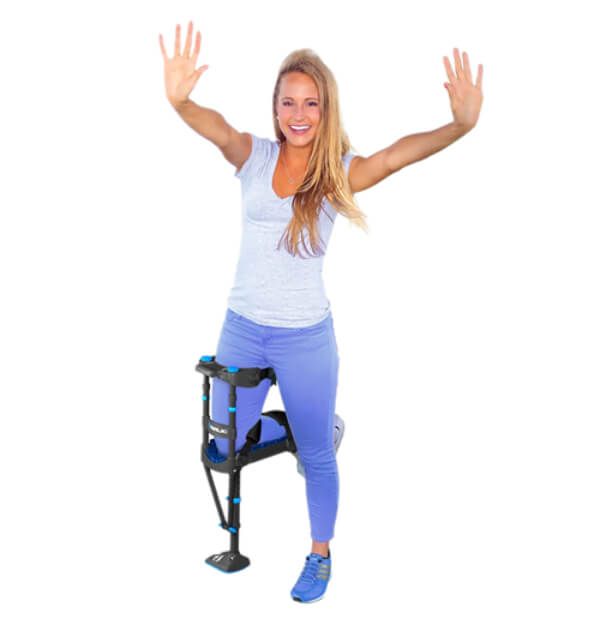
 | iWALK 3.0 Hands-Free Crutch View Product |
With the iWALK, you no longer have to put a hold on your daily lifestyle. The iWALK is a hands-free crutch mobility device that allows you to still move independently throughout the day, without maintaining pressure on your injured extremity. The original iWALK was thought of by a Canadian farmer who injured his leg and was looking for a way to continue to farm, despite not being able to walk on his injured leg. Over the years, iWALK has helped injured or disabled people maintain various jobs, including caring for a busy household. We know that each person is unique, and has different needs. That is why, the latest version, the iWALK 3.0 offers more individual customization such as selecting leg style, size, and height.
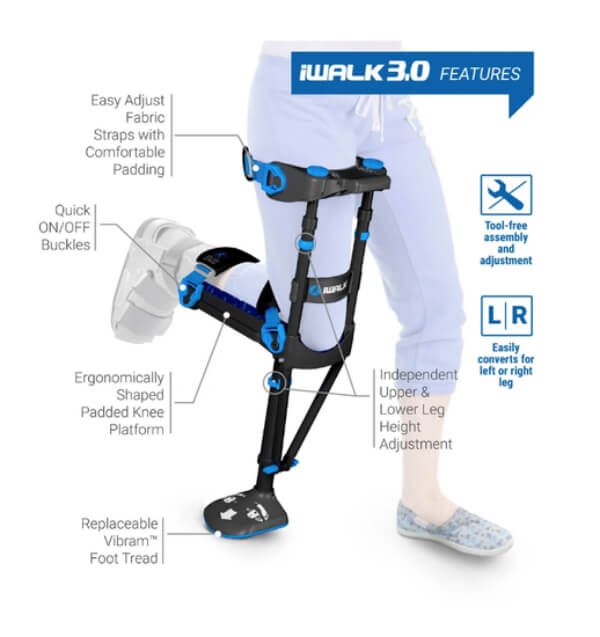
The iWALK hand-free crutch device has become globally recognized. In the early 2000’s it received approval from the United States Food and Drug Administration (FDA) as a class I medical device, classifying the device as one that is low risk to the user.
The iWALK has also undergone various research whose results support its benefits compared to standard crutches or other mobility devices. Studies have found that the iWALK device increases blood flow and increases muscle activity, preventing muscle wasting or atrophy.
In addition, iWALK has become a prestigiously known medical device in the healthcare industry, winning numerous medical awards over the years, including the most innovative product awards.
One innovative feature of the iWALK is that you can easily ambulate up and down the stairs. This is something that is very difficult to do, if at all, using the best crutches. Even if you do not have a second-story home, most of us will encounter at least a few steps, such as on a porch or entryway each day. The iWALK offers you the ability to comfortably climb up and down stairs and move while you turn your place into a universally visitable home.
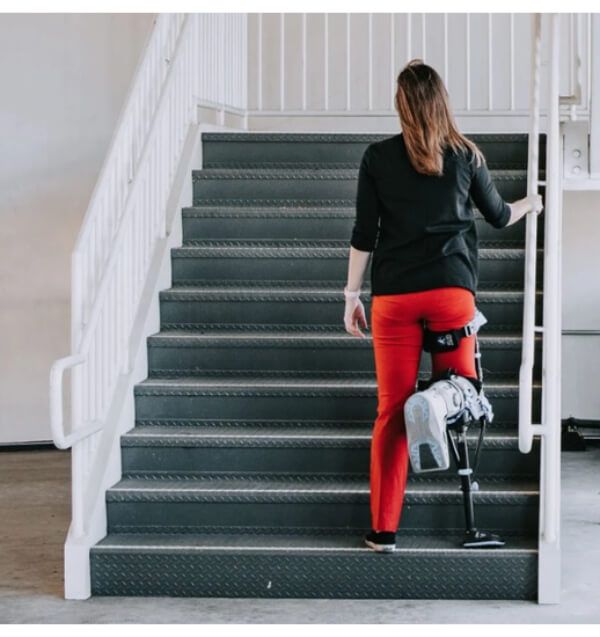
A recent study published in 2019 found that patients preferred iWALK when compared to traditional standard crutches. The study evaluated the response of 44 preoperative foot and ankle patients, and a preference for hands-free mobility devices was found.
Traditional crutches have been around since the 1900s, and despite design updates, several patients still complain of pain and discomfort with use. In addition, secondary injuries while using crutches can occur. For example, injuries to the axilla or falling while trying to maneuver with crutches.
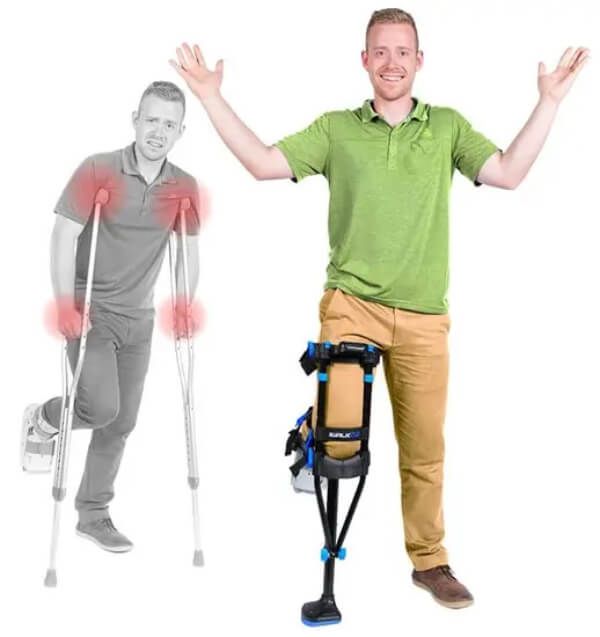
Scooters are often a more comfortable option compared to crutches. However, scooters come with their own set of limitations. Scooters are often heavy, bulky, and cannot fit in certain rooms or entrances. Scooters also cannot be used to ambulate up and down stairs. Scooters also require the use of hands for steering. Automatic scooters also require charging and an adequate storage area for the scooter, base, and battery. In addition, scooters are also more costly compared to crutches.
The iWALK is an innovative alternative to traditional mobility devices that offers increased comfort and flexibility. Using the iWALK, public transportation can easily be used. The iWALK is also reasonably priced to offer increased accessibility.
Starting with the iWALK is easy. Several education resources are available to explain how to properly start using the iWALK device. A video tutorial walks you through how to best fit your iWALK 3.0 as well as how to start ambulating with it. iWALK continues to provide the resources you need to best optimize your use of the iWALK.
iWALK was designed for use by a diverse population. It fits users that are between 4’10” to 6’6” tall and up to 274 lbs; making the device an ideal fit for most adolescents and adults. If you were able to walk previous to your injury, then the iWALK can help you walk post-injury.
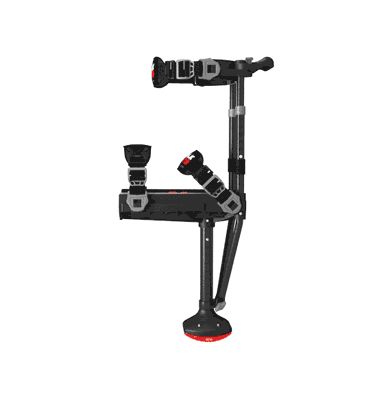
Unlike traditional mobility devices, such as crutches, the iWALK was designed with comfort in mind. The ergonomically padded knee platform provides comfort while used and helps prevent skin and joint irritation. It also does not require hunching over, and a normal upright posture can be maintained with use. In addition, the iWALK 3.0 weighs less than 5 lbs, making this lightweight device easy for carrying and traveling.
The iWALK assembly is a stress-free process. The iWALK can easily be assembled and adjusted tool-free at home by a single person. In addition, our iWalk 3.0 product page provides assembly videos that can be followed and referred to when needed.
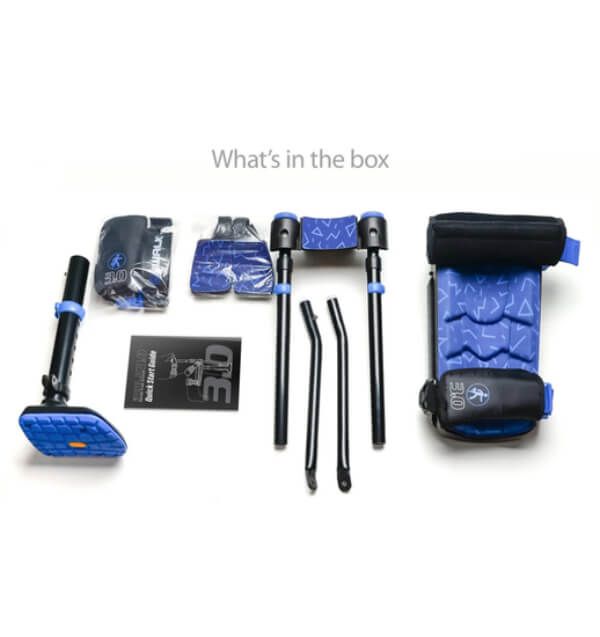
The iWALK has been used by various doctors, athletes, and celebrities. When a famous person gets injured, they are likely to try the best available product. For example, Harrison Ford broke his leg while filming Star Wars Episode VII. He soon learned about the iWalk and had to have it.
Recommended by Doctors
“I recommend the iWALK for all of my patients that have ankle and foot injuries. As long as they have one uninjured extremity, the iWALK is a great option for them. It is a game-changer because it allows my patients to still go about their normal daily activity.”
Dr. Andrew Hsu, MD
Associate Clinical Professor of Orthopedic Surgery
After Ankle Injury
“The iWALK 3.0 is a must-have for injury. I fractured my left ankle and was instructed “non-weight bearing” by my doctor. The iWALK 3.0 allowed me to still care for my family of 5 with my injury. Thank you iWALK.”
Clair W.
Long-Term Use
“I have been using crutches since I was 10 years old, and now I am 19. I can tell you that crutches hurt! I accidentally came across the iWALK, and I am so happy that I did. Crutches had limited the activities that I could participate in life. Now, with the iWALK, I can do all the things again that I love.”
Robin W.
A: Yes, the iWALK can be used by both adolescents and adults. It offers the advantages of being able to ambulate with a lower extremity injury and still have both hands available for use.
A: Yes, the iWALK patented foot has a Vibram pad that allows good traction. The iWALK can be used indoors, outdoors, and even on wet surfaces.
A: Some insurances will pay for the iWALK, however, every insurance plan is different. We have seen full reimbursements from United Healthcare, Blue Cross / Blue Shield, Aetna, Cigna and many others. Check with your healthcare provider and insurance company to find out if your specific policy will pay for the iWALK. Please note: Medicare and Medicaid do not reimburse the iWALK.
A: The iWALK is compatible with most removable boots. Depending on the boot’s height, it could cause shin pain. To remedy this situation, place some padding under your knee (where there is not a boot/cast).
A: No, the iWALK should not hurt your knee if used properly. The knee does not actually come in contact with the iWALK. There is no pressure placed on the knee. When using the iWalk, your shin comes in contact with the platform, and there is not any weight placed on the knee.
A: Yes, yes, yes! The iWALK can be used long-term in people with below the knee (BKA) amputations. The iWALK is great for times when you may not feel like putting on a prosthesis, for example when going to the bathroom.
The iWALK is an innovative hands-free mobility device that can be used both short-term after acute lower extremity injuries and long-term for chronic conditions. It promotes a quicker recovery while allowing you to continue with your daily activities of living. The iWALK 3.0 is just one of the many innovative medical products that can help assist in your recovery.
Thanks for reading, and we hope you found our article helpful! For more product reviews and buying guides, check out Caregiver University. Caregiver University is RehabMart’s free, educational resource for medical products.

Co-Founder of Rehabmart and an Occupational Therapist since 1993. Mike has spent his professional career working in multiple areas of Occupational Therapy, including pediatrics, geriatrics, hand therapy, ergonomics and inpatient / outpatient rehabilitation. Mike enjoys writing articles that help people solve complex therapeutic problems and make better product choices.